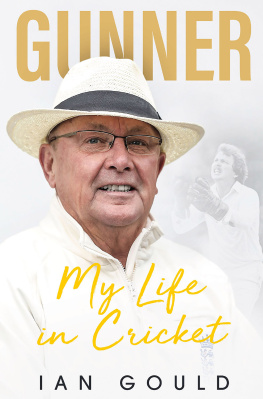Going All the Way: A Novel
Dan Wakefield
FOR ALL THE HORSES OF THE STERN MOON
The story of my boyhood is important only because it could happen in any American family. It did, and will again.
EARL EISENHOWER, BROTHER OF PRESIDENT DWIGHT D. EISENHOWER,
APRIL 4, 1954
Farther along well know more about it
Farther along well understand why.
AN AMERICAN GOSPEL SONG
Foreword by Kurt Vonnegut Jr.
Dan Wakefield is a friend of mine. We both went to Shortridge High School in Indianapoliswhere the students put out a daily paper, by the way. His publisher is my publisher. He has boomed my books. So I would praise his first novel, even if it were putrid. But I wouldnt give my Word of Honor that it was good.
Word of Honor: Mr. Wakefield has been a careful and deep author of nonfiction for yearsIsland in the City, Revolt in the South, The Addict. The Atlantic Monthly gave him an issue all his own for Supernation at Peace and War. Word of Honor: he is also an important novelist now.
Going All the Way is about what hell it is to be oversexed in Indianapolis, and why so many oversexed people run away from there. It is also about the narrowness and dimness of many lives out that way. And I guarantee you this: Wakefield himself, having written this book, can never go home again. From now on, he will have to watch the 500-mile Speedway race on television.
This is a richer book than Portnoys Complaint, with wider concerns and more intricate characters, but the sexual problems are much the same. Wakefield shows us two horny young Hoosiers, and it is easy to imagine their meeting Alexander Portnoy in a Howard Johnsonsmidway between Indianapolis and New York. If they were candid with one another, they would admit that they were rotten lovers, and they might suppose mournfully that rotten lovers were not welcomed by women anywhere.
Going All the Way is a period piece, incidentallyset in ancient times, at the close of the Korean War. And every book is a period piece nowsince years or even weeks in America no longer resemble each other at all.
This book is full of belly laughs, but I am suspicious of belly laughs as entirely happy experiences. The only way to get a belly laugh, Ive found, is to undermine a surface joke with more unhappiness than most mortals can bear.
After a series of low-comedy sexual failures, for instance, one of Wakefields heroes cuts his wrists lightly with a razor blade, so that rivulets of blood began to flow together, forming a thick little puddle. This isnt funny, and the scene becomes less funny as it goes on: He started smearing the blood over his face and over the front of his torn shirt, like an Indian painting himself to prepare for a ceremonya battle, a blessing, a death.
So much for sexual comedy. Nobody dies in the book, but a lot of people would like to, or at least wouldnt mind.
Wakefields reportage of life in Middle America, as one might expect, is gruesomely accurate and enchanting. His sex-addled fools drive their parents automobiles through a vast pinball machine whose bumpers and kickers are strip joints and taverns and gas stations and golf driving ranges and hamburger stands. They seek whorehouses, which, it turns out, have been closed for years.
They return home periodically to their smug and vapid parents, grumpily declining to say where theyve been. Their stomachs, already churning with hamburgers and beer, twist even more grotesquely when their parents want to know when they are going to settle down to nice jobs and nice wives and nice houses in Indianapolis.
Finallythere is a tremendous automobile crash.
And, finally again, this wildly sexy novel isnt a sex novel. It is really about a society so drab that sex seems to the young to be the only adventure with any magic in it. When sex turns out to be merely sex, the young flee to more of the same elsewhereand they play dangerous games with, among other things, automobiles and razor blades.
How old are Wakefields protagonists? About the same age Ernest Hemingway was when he returned to Middle America as a quiet, wounded, authentic hero of World War I.
Preface to the Indiana Edition
My friend and fellow Hoosier Kurt Vonnegut is right about most things, but I am happy to say he was wrong in predicting Id never be able to return to Indianapolis after writing this novel (he will have to watch the 500-mile Speedway race on television). For a while, though, it seemed his assessment was all too accurate. When the book came out, there were angry feelings back home in Indiana that Going All the Way had gone too far. Some people (mostly ones I barely knew) thought Id exposed their most intimate secrets, while others felt I had cast aspersions on their community and its values, the place of my own birth and upbringing. At first I wished Id followed an early anticipation of this kind of misunderstanding and set the book in Cleveland.
But in fact I could never have set the book in some other citynot because everything in my novel could not have happened in any American city in the midwest in the nineteen-fiftiesbut because no other place evoked such feelings in me, called forth the kind of emotion and love set off by the very names of the streets I grew up on (Winthrop, Guilford, Carrolton), my old neighborhood (Broad Ripple), or the drive-ins of my high-school days (The Ron-D-Vu, The Tepee), or bars (The Red Key, The Melody Inn), or the few bodies of water in that landlocked home we proudly learned in grade school was the largest city in the world not on a navigable waterway (Fall Creek, White River, The Canal) or the lakes beyond with the Indian names where we partied and swam and water-skied (Wawasea, Maxincuckee).
Happily, time does heal, and healers seem to materialize out of the blue to help the process. Librarians are the angels of writers (the ones at the Broad Ripple branch library nourished my love of reading from age six), which was proved again by Ophelia Gorgiev Roop, who as director of adult services for The IndianapolisMarion County Public Library invited me to give a talk there in 1985, assuring me Going All the Way was no longer a source of controversy, but a favorite reading-group selection. Drawn by the warm invitation, I agreed to make my first public appearance in Indianapolis since the book was published in 1970; the library announced my talk as A Prodigal Son Returns.
For their newsletters announcement I wrote: I see myself on this return like the aging warrior, wrinkled and weathered, with feathers turning to gray, raising a hand in blessing and saying I come in peace. Thats how I was received, and my old gang from high school assembled for a party that was one of the happiest events of my life. Ive returned often since to give talks and workshops and visit with friends.
There seemed a lovely symmetry in the fact that while Going All the Way kept me away from Indianapolis when it first was published in 1970, it brought me back for the longest time Id spent there since college when the movie script I wrote of the novel was filmed there twenty-six years later. Film rights to the novel had been optioned before, but a movie wasnt made until two young men of talent and commitment appeared in my life in the fall of 1994 and told me this was their favorite book and they wanted it to be their first feature film.
Director Mark Pellington and producer Tom Gorai wanted me to write the script, keep the story in the nineteen-fifties, and film it in Indianapolis. They invited me to be on the set and offer my advice. This is a rare privilege for any writer, and the opposite of my former novel-into-movie experience, when the person who bought the rights to














![Sonny Barger & Darwin Holmstrom - Lets ride: Sonny Bargers guide to motorcycling ; [how to ride the right way - for life]](/uploads/posts/book/135921/thumbs/sonny-barger-darwin-holmstrom-let-s-ride-sonny.jpg)

